Post-1970 Parker converters, and some pens that they fit.jpeg
This photo shows my post-1970 Parker converters, and the c/c pens that I know that they fit into and work in.
Pens L-to-R:
Parker 45;
Parker 75;
Parker 25;
Parker 15/Jotter FP;
Parker Vector;
Parker Sonnet;
Parker Frontier;
Parker Urban (first, pre-2016, version).
Converters shown:
A 1970s converter that came to me with a 75 | a simplified squeeze converter that has the date code ‘YI’ stamped on it (I presume for 1986 Q3);
a slide-converter from the mid-1990s (note its superb, tubular, ink-agitator) | a chrome-plated 2010s ‘deluxe’ twist-converter (note that it, stupidly, has NO ink-agitation device);
a slide-converter from the 2010s (note its cheaper, occasionally-problematic, ball-bearing ink-agitator) | a gold-plated 2010’s ‘deluxe’ twist-converter (again, stupidly, no ink-agitator!).
All of these converters have the same external diameter as Parker’s proprietary long cartridges, so they should fit into, and work in, any Parker c/c pen except for:
- the Parker ‘Esprit’ (which was collapsible), and;
- the Parker ‘Duofold Demi’ (which had a very short barrel, and can only accept Parker’s proprietary ‘short’ cartridges)
No converter will fit into either of those pens!
I think that Parker’s proprietary ‘short’ cartridges are not now still made, because they do not currently appear anywhere on Parker’s official websites.
Then again, neither do any of these converters, so who knows? 🤪
In any case, the ‘Esprit’ and the ‘Duofold Demi’ were each only made for a short period in the 2000s. Given that the proprietary Parker ‘short’ cartridges have now become ‘Unobtainium’, I urge you to not buy either a Parker ‘Esprit’ or a ‘Duofold Demi’!
Details about the ink-agitators (or lack thereof):
The ‘deluxe’ twist-converters get sold with Parker’s ‘flagship’ Duofold pens. They contain NO ink-agitation device. Which means that they suffer from the annoying phenomenon of the ink in them occasionally sticking at the far end of the converter from the feed-nipple, and one’s ‘deluxe’ ‘flagship’ pen therefore suddenly stopping writing. This phenomenon is caused by the surface tension if the ink being more-powerful than the force exerted on it by gravity. I have experienced this problem with several brands of ink, including Parker Quink.
The cheaper slide-converters do contain ink-agitation devices.
These move within the converter, and they dislodge any blobs of ink that get stuck at the far end of the converter by disrupting the surface tension of the ink, meaning that these, ‘cheap’ converters don’t cause one’s pen to stop writing.
The slide-converter from the mid-1990s contains a hollow tube as an ink-agitator. This slides inside the converter, and never blocks the end of the converter/feed nipple.
The later slide-converters (I have several) contain an ink-agitator that is cheaper to manufacture; a ball-bearing.
The ball-bearing is round, and so it occasionally blocks the open end of the converter, thereby denying ink access to the pen’s feed.
This is not usually a problem while one is writing, because one can just ‘wiggle’ the pen to move the ball, and so allow more ink to get into the feed, but: it can cause ‘hilarious consequences’ if one is trying to flush one’s pen to clean it, and is holding one’s pen with its nib pointing downwards.
I wish that Parker (and Waterman!) would spend the little bit of money that would be necessary to put a tubular ink-agitator in to the ‘deluxe’ twist-converters that get sold with their most-expensive (costing £ several-hundred £ to well over £1000, or over £1500!) pens!
Credit
Copyright
- 1.32 MB
- 1600x1200

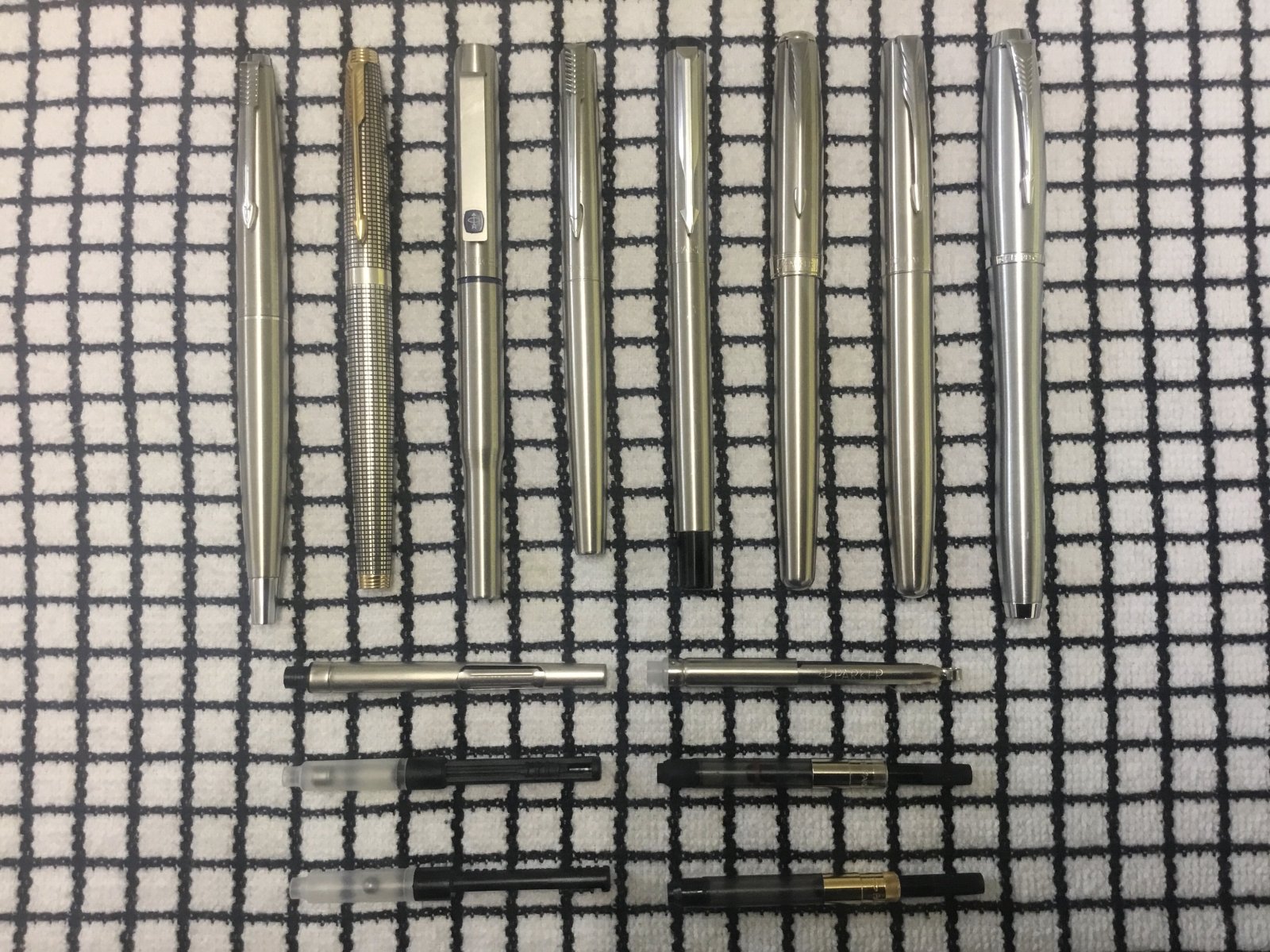




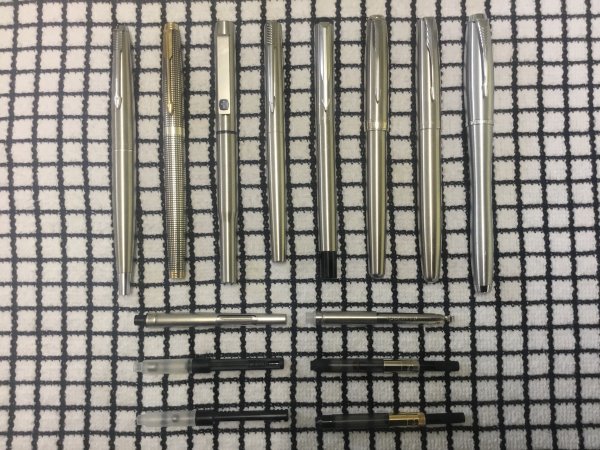
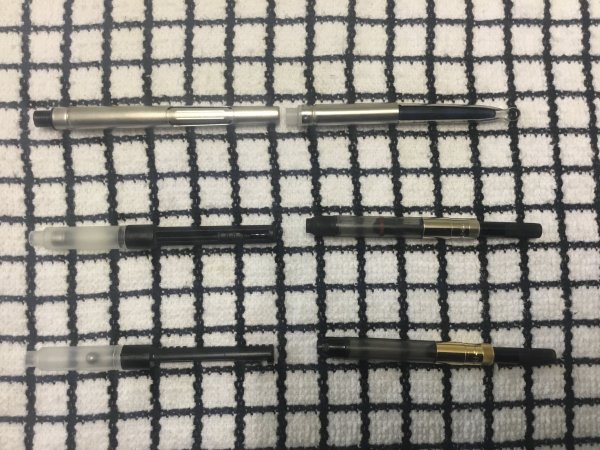
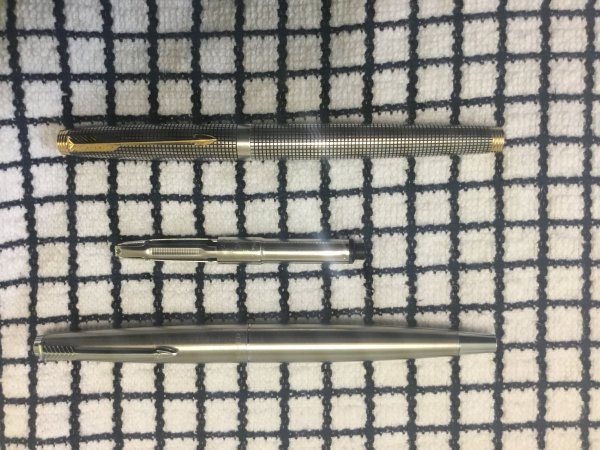
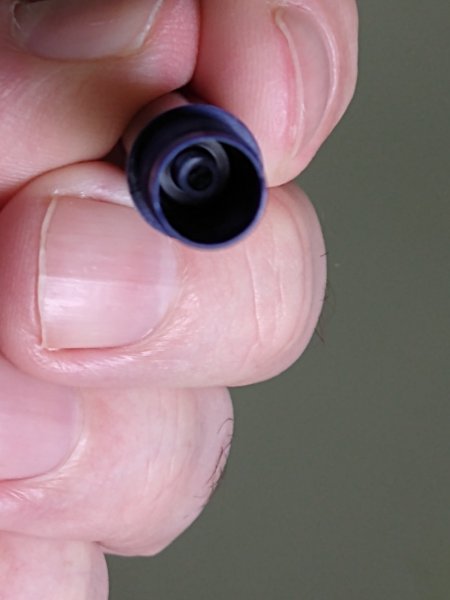
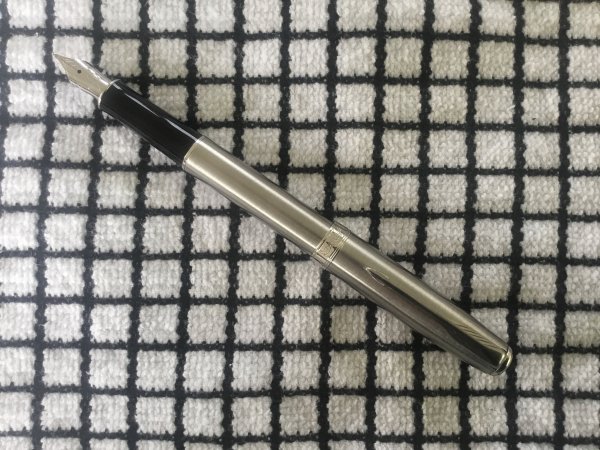

Recommended Comments
There are no comments to display.
Create an account or sign in to comment
You need to be a member in order to leave a comment
Create an account
Sign up for a new account in our community. It's easy!
Register a new accountSign in
Already have an account? Sign in here.
Sign In Now